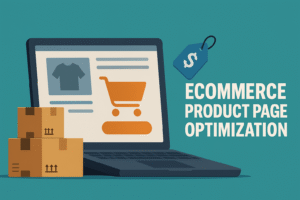One of the most important things for managing an ecommerce store efficiently and profitably is to maintain optimal inventory levels. Customer demand can sometimes be unpredictable.
If you stock too much inventory, you may be paying for additional storage space that is not needed or risk not being able to move product that is seasonal or perishable. Stocking too little and you are taking the risk of running out of inventory completely.
Striking the perfect balance is not easy, but can greatly impact your bottom line.
What is a Stock Out?
A stock out happens when a store has run out of an item that was in demand–either through too many customers buying it at once or because a sufficient quantity was not maintained in inventory.
Stock outs can be very costly for businesses as it results in lost sales opportunities. When a customer is searching for a specific item and cannot find it, rather than waiting for you to get it back in inventory, they may go to a competitor who does have it in stock.
It is important to have a plan in place to avoid stock outs.
The Problems With Maintaining Excess Inventory
Excess inventory can be just as costly for businesses as stock outs.
Maintaining too much inventory ties up working capital that could be used elsewhere in the business and incurs additional storage costs.
If products are perishable or seasonal, there is also the risk that they will not be able to be moved at all.
There are ways to avoid stock outs while not over indulging on inventory levels.
Stock Out vs Overstocking
The main difference between a stock out versus overstocking is the risk you take on. If your inventory levels run too low and you have a stock out, you are risking upsetting customers and maybe even driving them to competitors. Overstocking, on the other hand, means you are taking the risk of having product you cannot move and paying for unneeded storage space.
Learn and Understand Your Lead Times
The first step in managing inventory is to understand your lead times.
Lead time is the amount of time it takes for you to receive an item from the time you place an order with your supplier.
This can vary depending on the item ordered, the supplier, and other factors such as production time and shipping.
Understanding your lead times will help you to place orders with your suppliers in a timely manner so that you don’t run the risk of stock outs.
This is an important concept to understand. The whole purpose of your inventory is to cover your suppliers’ lead times.
Leverage Inventory Management Software
There are many great inventory management software solutions available that can help you to keep track of your inventory levels and lead times.
Using this type of software can help you to streamline your inventory management process and avoid stock outs. Some solutions even offer features such as automated reordering based on predetermined thresholds.
This can take a lot of the guesswork out of maintaining adequate inventory levels.
Most third-party order fulfillment service providers will have some sort of inventory management software as part of their service to help you manage your inventory levels.
Understand Your Customers’ Demands
Another way to avoid stock outs and excess inventory is to have a good understanding of your customers’ demands.
This can be accomplished through data analytics.
There are many software solutions that can help you to track your customer’s purchasing habits. By understanding what your customers are buying and when, you can better anticipate their future needs and order accordingly.
This information can also help you to make decisions about stocking seasonal or perishable items.
Establish Reorder Points
In order to avoid stock outs, it is important to establish reorder points for all of the items in your inventory.
A reorder point is the level of inventory at which you place an order with your supplier.
This should be based on your lead times and customer demand.
By establishing reorder points, you can be sure that you always have enough inventory on hand to meet customer demand without overstocking.
Utilize Demand Forecasting
Another way to avoid stock outs and excess inventory is to utilize demand forecasting.
This is a process of using data analytics to predict future customer demand.
By understanding trends in customer purchasing habits, you can better anticipate their future needs and order accordingly.
This information can also help you to make decisions about stocking seasonal or perishable items.
Use Consignment Inventory
Consignment inventory is when the supplier retains ownership of the inventory until it has been sold to the customer. The retailer doesn’t pay for the product until it has been sold.
This can be a great way to avoid stock outs and excess inventory.
With consignment inventory, the supplier takes on the risk of overstocking. This can free up working capital for the retailer and help them to avoid stock outs.
Not all suppliers offer this option.
The main disadvantage is this will impact delivery times, especially if the items are delivered to your warehouse before being shipped to the customer.
Maintain Accurate Inventory Levels
One of the best ways to avoid stock outs and excess inventory is to simply maintain accurate inventory levels.
This can be accomplished through regular cycle counts and stocktaking.
By keeping accurate records of your inventory, you can be sure that you always have enough on hand to meet customer demand without overstocking.
In Conclusion
Stock outs and excess inventory can be costly for any business.
By following the tips above, you can avoid these costly mistakes and keep your business running smoothly. Contact ShipBuddies to learn more about how we can help you streamline your inventory management process.









